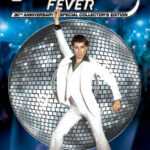The story of the French Cancan Dance is a vibrant tale that twirls us back to 1820s Paris. Imagine the grand public balls of the time, where the elegant quadrille held sway. This sophisticated dance, set to original music from operas and ballets, involved couples gracefully moving through five distinct figures. It was the dance of the moment, a picture of Parisian refinement.
However, beneath the surface of decorum, a rebellious energy was brewing. Men, seeking a more uninhibited form of expression, began to improvise during the quadrille. They broke away into unrestrained, energetic movements, a physical release of pent-up excitement. This improvised, boisterous version of the dance became known as the “chahut,” a French word capturing the spirit of “uproar” or “commotion.” It was the quadrille with a playful, chaotic twist.
By 1850, Paris was a city brimming with life. Theatres were flourishing, comedy shows drew enthusiastic crowds, and public balls were more popular than ever. In this atmosphere of exuberant entertainment, daring Parisian women decided to embrace the frenzied chahut as their own form of expression. These women injected a new dynamic into the dance, matching and even surpassing the men’s earlier exuberance. Among these pioneering dancers, one figure rose to prominence: Celeste Mogador. As the star of the renowned Bal Mabille, Celeste captivated Parisian society with her audacious and unpretentious take on the quadrille. She was an instant sensation, celebrated for her energy and flair.
A decade later, the chahut crossed the English Channel. Charles Morton, a visionary considered the father of modern Music-Hall, introduced this captivating dance to London audiences at the Oxford Music Hall. Recognizing its French origins and the sensational reaction it provoked, Morton christened it the “French Cancan.” The name perfectly encapsulated its exciting and slightly scandalous nature. Interestingly, this “socially aware dance,” as it was described, soon faced censorship in Oxford, deemed too daring for the conservative sensibilities of the time.
Back in Paris, however, the dance now widely known as the French Cancan was gaining unstoppable momentum. Its popularity exploded thanks to the extraordinary cancan dancers of the Moulin Rouge. In 1889, the linen maids of Montmartre Hill, seeking to break free from societal constraints, took to the stage of the newly opened Moulin Rouge. They presented their electrifying version of the French Cancan to astonished audiences. For these women, the cancan was more than just a dance; it was a bold statement, a way to challenge the established norms of the era. Some of these dancers became legends in their own right, icons of Parisian nightlife and artistic rebellion. The French Cancan shows at the opulent Moulin Rouge cabaret grew into spectacular extravaganzas, drawing crowds from all corners of society and the world.
The allure of the French Cancan and the Moulin Rouge extended beyond the stage. In 1955, the legendary director Jean Renoir immortalized these dazzling performances in his film “French Cancan.” Starring the iconic Jean Gabin as Danglard, the movie brought the energy and excitement of the cancan to a global audience, further cementing its place in popular culture.
To this day, the Moulin Rouge and its troupe of talented dancers continue to enchant visitors with breathtaking dinner shows. Audiences are still mesmerized by the high-kicking, skirt-swirling spectacle of the cancan, performed by dancers adorned in magnificent costumes shimmering with feathers and rhinestones. The French Cancan remains a symbol of Parisian joie de vivre, a testament to its vibrant history and enduring appeal as a thrilling and iconic dance form.


